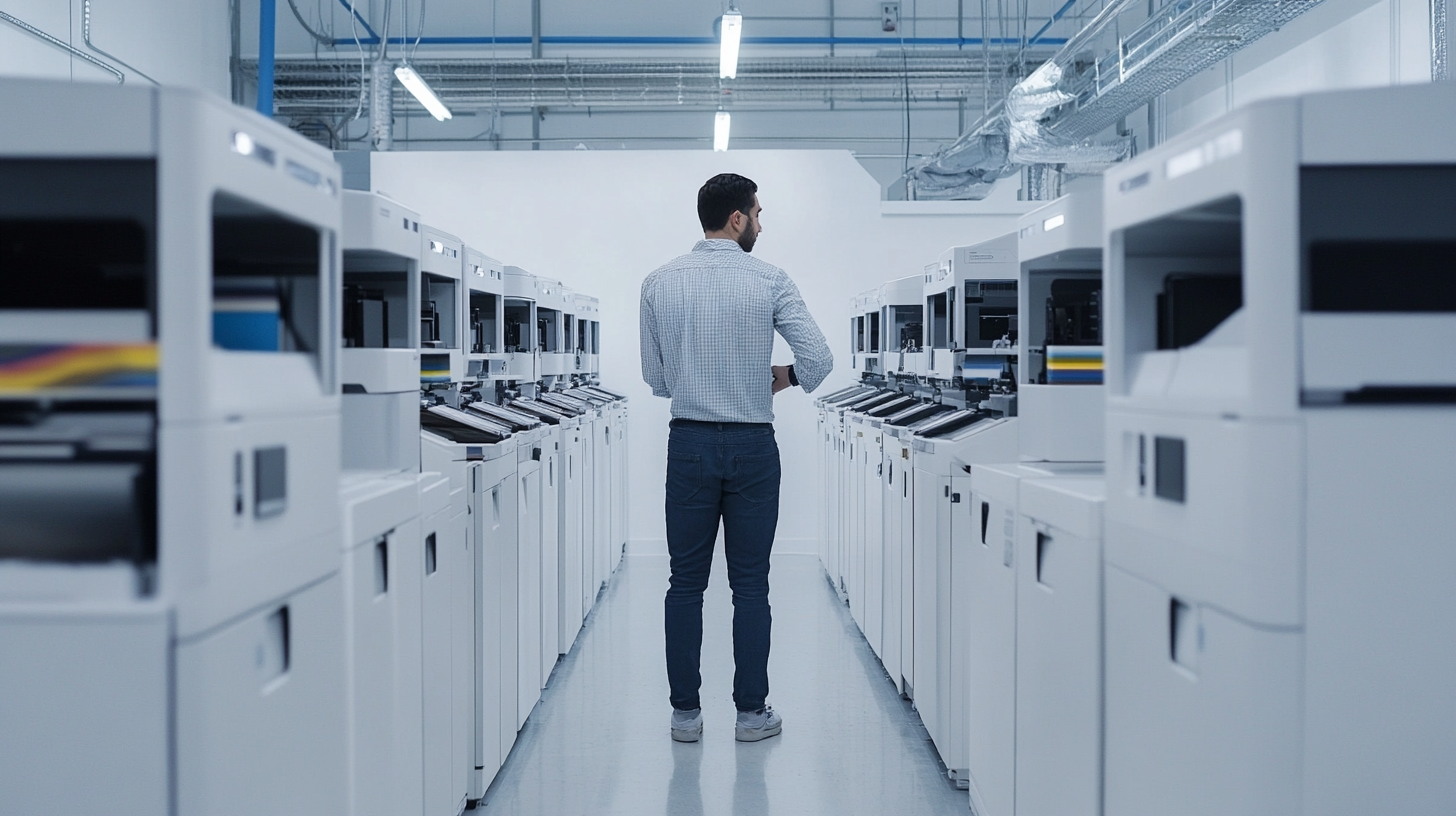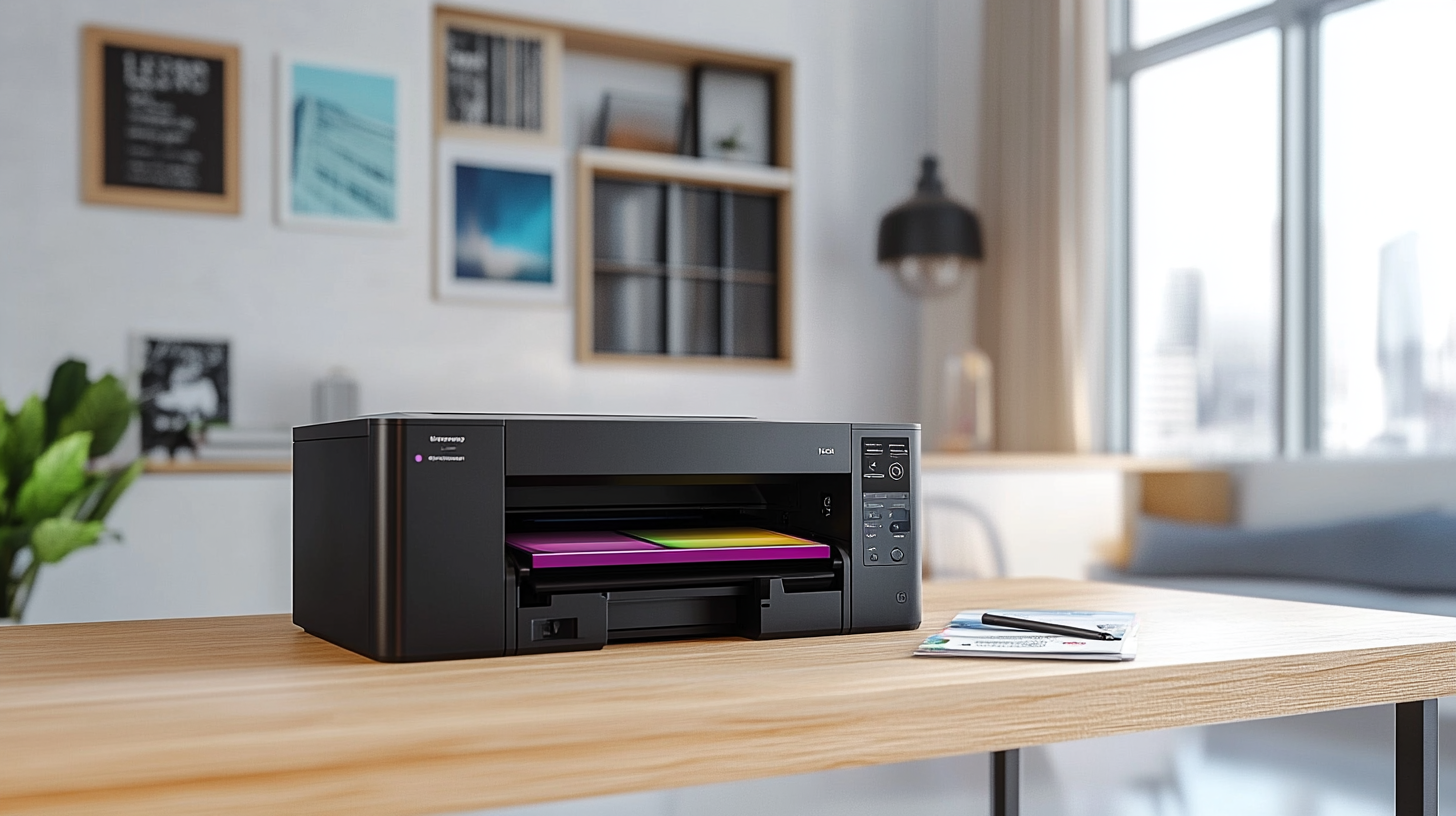Partner Login
Enter your username and password here on order to log in on the partner portal:
No registered partner yet?
Register nowRevolutionizing Printing: Key Ink Cartridge Innovations Shaping the Future by 2025
In recent years, the printing industry has seen a remarkable transformation, significantly driven by innovations in ink cartridges. According to a report by Smithers Pira, the global inkjet print market is projected to reach $137 billion by 2025, reflecting a growing demand for high-quality and efficient printing solutions. This surge emphasizes the critical role ink cartridges play in meeting both consumer and commercial printing needs. As technology advances, the integration of smart, eco-friendly, and cost-effective ink cartridges is becoming increasingly pivotal, shaping the future landscape of printing practices.
Furthermore, with the rise of digitalization and environmental consciousness, manufacturers are actively investing in research and development to enhance the performance and sustainability of ink cartridges. A study by Research and Markets highlights that the global market for printer consumables, including ink cartridges, is expected to expand at a compound annual growth rate (CAGR) of 3.5% through 2025. This trend underscores the necessity for innovation in that area, driving companies to adopt new technologies that not only reduce waste but also improve the overall user experience. As we look ahead, it is clear that ink cartridges will be at the forefront of revolutionizing the printing industry.

Emerging Eco-Friendly Ink Solutions: A Greener Approach to Printing
As we move towards 2025, the printing industry is witnessing a significant shift towards eco-friendly ink solutions. With rising awareness around environmental issues, businesses are compelled to innovate, leading to the development of sustainable inks that not only reduce carbon footprints but also enhance print quality. According to recent industry reports, the global eco-friendly ink market is set to grow significantly, projected to reach USD 3 billion by 2025, driven by increasing demand for sustainable packaging and printing solutions. One of the most promising advancements comes from the use of microalgae in ink manufacturing. This innovative approach harnesses the natural properties of microalgae to create inks that are both biodegradable and renewable. Additionally, a novel 3D printing method developed by UC San Diego engineers employs a simple process using polymer ink and saltwater, resulting in structures that are recyclable without the need for energy-intensive equipment. This method exemplifies how sustainability can be integrated seamlessly into the printing and packaging industries. Furthermore, discussions among pigment industry executives reveal a collective push towards enhancing sustainability measures by prioritizing the use of environmentally friendly pigments. These conversations highlight the industry's commitment to reducing harmful emissions and waste, thereby aligning with broader global sustainability goals. As these innovations take shape, they not only promise a greener approach to printing but also encourage other sectors to follow suit in their pursuit of sustainable practices.

Smart Ink Cartridges: Integration with IoT and Automation Trends
The world of printing is on the brink of a major transformation, largely driven by the integration of smart ink cartridges designed to harness the power of the Internet of Things (IoT) and automation. According to a report by Grand View Research, the global IoT in printing market is expected to reach $10.61 billion by 2025, demonstrating a remarkable compound annual growth rate (CAGR) of 23.6%. These innovations are poised to revolutionize the way we interact with printers and manage ink supplies.
Smart ink cartridges are designed with embedded sensors that monitor ink levels in real-time, allowing users to receive alerts and notifications on their smartphones or connected devices. This connectivity not only enhances convenience but also streamlines the replenishment process. A recent study by MarketsandMarkets indicates that by 2023, over 30% of office printers will utilize IoT capabilities, reflecting a growing trend toward automated inventory management and proactive maintenance.
Furthermore, automation trends in printing are leading to significant advancements in sustainability. For instance, smart cartridges can track usage patterns and adjust printing settings to optimize ink consumption, reducing waste. According to Environmental Protection Agency (EPA) estimates, efficient printing practices could lead to a reduction of over 35% in ink waste. As businesses increasingly focus on sustainability, the integration of smart technologies in ink cartridges will play a crucial role in minimizing environmental impact while enhancing operational efficiency.

The Impact of 3D Printing on Traditional Ink Cartridge Technologies
The advent of 3D printing technology is poised to significantly transform traditional ink cartridge technologies. As 3D printing continues to mature, it offers a new level of customization and material variety that traditional ink cartridges cannot match. This innovation challenges the conventional manufacturing methods of ink cartridges, prompting companies to rethink their approaches to production and design. Instead of relying solely on pre-filled cartridges, consumers may soon have the option to print their own cartridges, tailored specifically to their needs, using a range of materials.
Moreover, the shift to 3D printing could lead to a reduction in waste associated with conventional cartridges. Traditional cartridges often become disposable items after a single use, contributing to environmental concerns. In contrast, 3D printing allows for the possibility of reusing materials and producing cartridges on-demand. This not only reduces waste but also lowers production costs, which could revolutionize the pricing models currently dominating the ink market. As manufacturers begin to explore this technology, we may see a shift towards more sustainable practices in the printing industry.
Additionally, integrating 3D printing into the ink cartridge manufacturing process opens the door to innovative designs and features. Companies could create cartridges with enhanced functionality, such as improved ink flow mechanisms or even multi-functional designs that allow for simultaneous printing with various materials. This evolution not only benefits consumers with a more efficient printing experience but also encourages competition among manufacturers to innovate and provide better products. As these advancements take shape, the landscape of ink cartridge technology will undoubtedly be reshaped by the influence of 3D printing, paving the way for a new era of printing solutions by 2025.

Personalization in Printing: Custom Ink Formulations for Unique Needs
The future of printing is being redefined by a surge in personalization, particularly through custom ink formulations designed to meet unique customer needs. According to a recent market research report by Smithers Pira, the global ink market is expected to reach $22 billion by 2025, with increasing demand for personalized and sustainable printing solutions. This shift is driven by advancements in technology and a growing consumer preference for tailored products, enabling businesses to stand out in a competitive market.
Custom ink formulations allow companies to create specific colors and finishes that resonate with their brand identity. A survey by the Printing Industries of America revealed that 71% of print service providers anticipate higher demand for customizable solutions in the next few years. Businesses can now access a wide range of substrates and ink types, including eco-friendly options that cater to environmentally conscious consumers. This trend not only enhances brand loyalty but also encourages innovation as brands experiment with inks that have different properties, such as improved durability or vibrant color fastness.
Moreover, the integration of artificial intelligence and machine learning in the formulation process is paving the way for on-demand production capabilities. Companies can analyze consumer preferences and trends in real time, adjusting their ink formulas accordingly. This leads to greater efficiency and reduced waste, which is crucial in an era where sustainability is becoming increasingly vital. As we move toward 2025, the ability to personalize printing through innovative ink formulations will undoubtedly shape the industry landscape, providing both opportunities for growth and challenges in meeting diverse consumer demands.
Cost-Efficiency and Performance: Redefining Value in Ink Cartridge Innovations
In recent years, the landscape of ink cartridges has undergone significant transformations, driven by the dual demands for cost-efficiency and performance. As we look towards 2025, innovations in ink technology are redefining what consumers expect from their printing solutions. Advances in materials and design have led to cartridges that not only last longer but also produce higher quality prints at a fraction of the traditional costs. This shift is particularly crucial for small businesses and home offices where budget constraints are a constant concern.
Manufacturers are increasingly focusing on eco-friendly alternatives that do not compromise on quality. The introduction of refillable cartridges and subscription models allows users to refill their ink supplies without emptying their wallets. Additionally, the development of pigment-based inks promises better durability and vibrancy, meeting the demands of professional printing and graphic design. This redefined value proposition ensures that customers are not just buying ink but investing in products that enhance their overall printing experience.
With the rise of smart printing technologies, users can now enjoy features like ink level monitoring and automatic ordering, making the printing process smoother and more efficient. This combination of cost-effectiveness and superior performance is set to reshape the industry, giving consumers access to innovative solutions that were once unattainable. As the ink cartridge market evolves, businesses and consumers alike will benefit from these advancements, leading to a more sustainable and productive future in printing.
